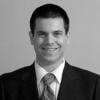Preferred Shares
A type of share capital that can have features a common stock
What Are Preferred Shares?
Preferred shares, also known as preference shares or preferred stock, are a type of stock in a company that gives holders a higher claim on the company’s earnings and assets than common stockholders. These shares typically come with a fixed dividend, which must be paid out before dividends to common shareholders.
Preferred stocks come before common stock, but they come after bonds in terms of dividends payment and upon liquidation.
Most preferred shareholders don’t have a voting right at the company shareholder meetings. In other words, they don’t have a right to be a part of the board of directors election and M&A projects.
Like equity shares, preferred shares also indicate an ownership stake. They have no maturity date and are recorded under shareholder’s equity in a company's balance sheet.
There are a bunch of features of this kind of shares, including but not limited to:
-
Preference for dividends
-
Preference in assets in the event of liquidation
-
Convertibility to common stock
-
Higher dividend yields
The primary credit rating agencies rate preferred stocks lower than bonds because of two possible reasons:
-
Preferred dividends do not carry the same assurances as bond interest payments.
-
Preferred shareholders' claims are subordinate to those of all other creditors.
Key Takeaways
-
Preferred shares are a type of hybrid securities, combining features of both equity and fixed income, with dividends prioritized over common stocks but after bonds.
-
Most preferred shareholders do not have voting rights in company decisions, such as board elections or mergers and acquisitions.
-
There are diverse types of preferred stocks , including cumulative (accumulating missed dividends), noncumulative (no accumulation of missed dividends), participating (extra dividends based on company performance), and convertible (can be exchanged for common stock).
-
Companies use preferred shares for alternative financing, resisting hostile takeovers, and maintaining control. Investors value them for portfolio diversification, higher dividends, and greater security than common stock.
-
Preferred stocks come with risks like interest rate sensitivity affecting their price, no guaranteed dividends, call provisions that can impact returns, and subordination during company liquidation.
Types of Preferred Stock
There are various types of preference shares; a few are explained below:
1. Cumulative preferred stock
Cumulative preferred stock is a type of equity that pays a fixed dividend on a predetermined schedule before the company's common stock dividend is distributed. The stock's par value typically determines the dividend amount.
If the dividend is not distributed for reasons such as net loss incurred, then the dividend amount will be accumulated to be paid on a later date.
The cumulative dividends rate is calculated by the following formula:
Dividends = dividends rate x par value
-
If the dividends are paid quarterly, divide the dividends by four.
-
If the dividends are paid semi-annually, divide the dividends by two.
Cumulative dividend = dividend x number of missed payments
For example, company XY has an 8% dividend on preferred shares with a par value of $200. Suppose XY often pays preferred shareholders dividends semi-annually. XY hasn't made dividend payments for the last two years; how much should they pay?
The number of payments = 2 payments x 2 years = 4 missed payments per two years.
Semi-annual dividends= (8% x 200) / 2= $8
Cumulative dividends= $8 x 4= $32
2. Noncumulative preferred stock
The noncumulative preferred stock enables the issuing business to cancel dividend payments which means shareholders don’t have a claim of missing dividends.
If a company in a particular year decides not to pay dividends, the shareholders of noncumulative preferred stock do not have a right to claim those payments in the future, even if the company later decides to pay dividends.
3. Participating in preferred stock
Participating in preferred stock allows the shareholders to receive additional dividends if the company meets specific financial targets.
Regardless of the company's performance, investors who purchased these stocks receive their quarterly dividend plus an additional dividend if the company meets predefined sales, profits, or profitability targets.
Participating preferred shareholders may have the right to get back the purchase price of the stock if the company is liquidated.
4. Convertible preferred stock
These are preferred issues that can be traded for a set number of a company's common stock. This exchange can happen whenever the investor wants, no matter what the common stock price is on the market.
The goal is to mitigate the negative consequences of rampant shorting and dilutive operations on the OTC markets on investors.
Advantages of Preferred Shares
The reasons for corporations issuing preferred stock differ from going public and offering common stock. Preferred stock is a type of equity financing that allows companies to raise funds without losing voting rights.
However, investors demand preferred stock, enabling them to get consistent dividends.
Preferred stock advantages for companies
-
Preferred stocks provide a company with an alternative form of financing, such as pension-led funding.
-
Corporations use preferred shares to resist hostile takeovers by issuing preferred shares containing poison pills (or forced exchange or conversion characteristics) that are activated following a change of control.
-
Preferred stock reduces the debt-to-equity ratio of the company. As a result, the company will be able to secure more funding from new investors in the future.
-
Preference shares are callable in most cases. To avoid interest rate risk and opportunity cost, a company, calls the shares at par value after a specific date.
-
It allow companies to limit the control they give shareholders regarding voting rights. Therefore, a firm can raise funds without losing control.
-
A corporation is not required to pay dividends if a company doesn't make enough profits in a given year.
-
Preference shares do not constitute a charge on the company's assets. The corporation can retain its fixed assets free in the future to raise financing.
-
Different types of preference shares may be issued depending on the market's demands.
-
Preference shares have a fixed dividend rate. In the case of rising earnings, a company can only give the equity shareholders the benefits of profits.
Preferred stock benefits for investors
1. Portfolio diversification
Preferred stocks provide considerable benefits in the form of portfolio diversity when added to an investor's portfolio.
2. Higher dividends payment
Investors can get higher dividend payments as preference shares are more secure than bonds.
3. Greater security than common stockholders
Preferred stocks come before common stock in terms of dividend payments.
As a result, stockholders enjoy a better level of security than owners of common stock.
4. Predetermined dividend rate
A preferred share's dividends are determined at the time of issuance. Some preference shares have a cumulative provision, which means unpaid dividends must be paid before regular shareholders' payout.
As a result, a company makes a concentrated effort to ensure that dividend payments are made on time.
5. Lower volatility than equities
Preferred shares tend to trade around their par value under normal market conditions since they can be redeemed at that value by the issuer. However, preference shares fluctuate more than fixed-income securities.
6. Tax-efficient yield
The dividends of preference shares aren’t taxed as interest income (securities). As a result, preference shares can provide a much better after-tax yield than fixed-income securities.
7. Premium from callable shares
The corporation can purchase back the shares since it is callable. You may receive more than you paid for the preferred stock if the callable price exceeds the par value.
8. Option of converting preferred stock to common stock
Preferred shareholders can convert their preferred shares to common stock. If the value of the common stock goes up a lot, they could sell their shares and use the money to invest in less risky investments.
Risks Associated with preferred Shares
Preferred stockholders have ownership in the company and enjoy many features, but it also has its own set of risks, including but not limited to:
1. Interest rate fluctuation (price)
Preferred stock dividends are usually fixed. Comparable to the secondary market price of bonds, the market price of preferred stocks tends to be interest-rate sensitive.
The market price of preferred stocks tends to go up when interest rates fall. When the interest rate increases, the market price of the preferred stock goes down.
2. No dividends guaranteed
Preferred stock dividends are typically paid before any dividends to common stockholders. However, there is no guarantee that dividends will be settled forever as the interest payments on the company’s bond.
Bondholders can file a lawsuit against the corporation if the company fails to make an interest payment on its bonds. Preferred shareholders cannot sue a corporation if it fails to pay dividends since the company is not regarded to be in default.
3. Call provision
A call provision is included in some preferred stocks, allowing the corporation to redeem its preferred shares.
When interest rates fall, a corporation is more likely to call its preferred stock. In this case, the corporation may reduce costs by redeeming the store for its par value and then reissuing it at the current reduced interest rate.
Investors could miss out on any possible capital gains from growing market prices, and they may have to reinvest the money at a lower interest rate.
4. Liquidation risk
Regarding liquidation, bondholders' claim on the company’s assets is greater than preferred stock. So, preferred bondholders get their money before preferred stockholders.
5. Rating risk
The same credit rating firms that rate bonds rate preferred stocks. Moody's, Standard & Poor's, and Fitch Ratings are the three main rating companies. While preferred stocks can be rated investment-grade, many are rated below BBB and are therefore called speculative.
Preferred Stock vs. Common Stock
Preferred stock and common stock are two primary types of stock that a company can issue to investors. They each come with their own set of characteristics and benefits.
The significant distinction between preferred and common stock is that preferred stock functions more like a bond with a fixed dividend. In contrast, common stock payouts are less guaranteed and represent a higher risk of loss if a firm fails.
Here's a comparison between the two:
| Common Stock | Preferred Stock | |
|---|---|---|
| Description | Common stock is suitable for long-growth investors. | Preferred stock is suitable for high-yield dividend investors. |
| Investor type | Suitable for long-growth investors. | Suitable for high-yield dividend investors. |
| Dividends | Dividends on common stock might fluctuate or even be eliminated. | Preferred stock dividend yields are significantly greater and fixed. Dividends on common stock might fluctuate or be eliminated. |
| Availability of Stock | Investors who purchase common stock receive a portion of ownership in the company. Common stock is more common on stock exchanges. | Investors who purchase preferred stock receive features similar to bonds. Preferred stock is less common on stock exchanges. |
| Voting Rights | Common stockholders often have the right to vote on the firm's board of directors and be a crucial part of decision-making, such as mergers and acquisitions. | Preferred stockholders do not have voting rights and cannot participate in the company's decision-making process, such as mergers and acquisitions. |
| Fluctuation of Share Price | Common stock prices are more likely to fluctuate. | Preferred stock prices are more stable with lower share price fluctuation. |
Common stock
The most appealing aspect of common stock is that it represents ownership in the company. As a firm grows more significant and generates more profits, its share prices will increase dramatically.
Therefore, the investor will enjoy better returns. However, they can experience losses if the company shares price drops over a short period. For example, if Netflix’s common stock prices continuously drop, then it will result in enormous losses for its shareholders.
Preferred stock
The value of a company rises in investors' eyes, such as retirees who prefer more stable and less risky investments. The investors will benefit from its stable price and hence will not experience unexpected losses associated with decreasing market share prices.
In other words, preference stockholders' chances of losses significantly drop as the company's stock price rarely falls dramatically in a short period.










or Want to Sign up with your social account?